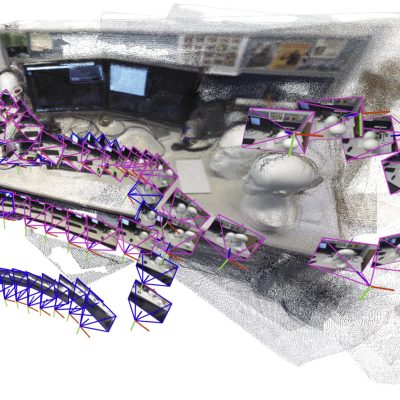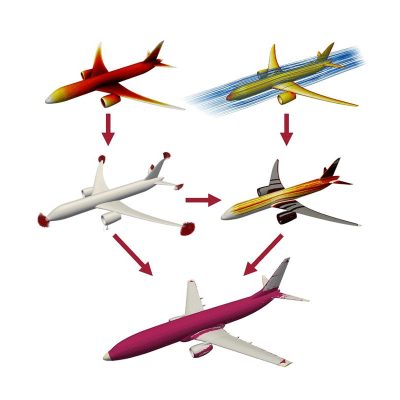
To stop deforestation, the solution may be out of this world
Unsanctioned gold mining and logging have long threatened Ghana’s verdant forests. Seven years ago, the West African nation began a collaboration with Professor Danielle Wood, SB ’05, SM ’08, PhD ’12, to tackle this existential threat head-on. Today, Ghana has made strides in understanding the scope and severity of deforestation, and a new paper in Acta Astronautica outlines how using systems engineering methods and space-based data can empower developing nations to address their environmental challenges.
The project also furthers the country’s commitment to sharing results with its people and the world.
“You can’t improve what you can’t monitor,” says Wood, the Benesse Career Development Professor of Research in Education in the Department of Aeronautics and Astronautics and an associate professor of Media Arts and Science at MIT Media Lab, who leads the Space Enabled research group. “The government of Ghana invited my team and me to join them in this effort, and we were happy to do so. I’ve seen government officials work really hard to get accurate, validated data about their country and to be transparent about their findings.”
Ghana’s commitment also aligns with the United Nation’s Sustainable Development Goal (SDG) #15, Life on Land, which calls on nations to responsibly manage their forests and stop biodiversity loss by 2030. This and 16 other SDGs give humanity a fighting chance to create a more just world and stave off the worst effects of climate change. Yet, achieving even one SDG, from establishing benchmarks to drafting policies to implementing initiatives, is costly. In fact, a 2023 UN report said that $30 trillion is needed for countries to meet their goals.
“It’s very expensive and time consuming to suddenly ramp up reporting,” says Wood, who worked with scientists and engineers from the Ghana Space Science and Technology Institute and the Ghana Statistical Service, and other government agencies. “Adding space data is an efficient option to get national-level information. Once you’ve set up the initial algorithms, repeating the process is really affordable.”
The paper explains how the team uses a combination of satellite-based data from NASA, the European Space Agency, Japan’s JAXA, and Germany’s DLR. The input data includes passive optical datasets such as LandSat and Sentinel-2 as well as radar-based data that can be used to estimate land elevation. Using a long-term dataset from the NASA/USGS Landsat archive, the team compared forest in the southwestern gold-mining region of Ghana in 2023 to the status in 2005 and showed how much deforestation occurred due to mining, urbanization or other changes. This analysis revealed that urbanization is a larger source of deforestation due to mining, accounting for 37% of the recorded loss while mining explained 21%. Another analysis used the satellite data to create a national land use classification comparing economic activities across Ghana in 2015, 2020 and 2022. With this input, the project shows that agriculture is the largest category of land use and also experienced major growth, with a 59% increase in agricultural area between 2020 and 2022. Meanwhile closed forests, which usually denote the oldest trees, decreased by 17% and open forest, with less dense tree growth, increased by 12% in the same time period. The paper provides additional quantitative results about Ghana environmental and social transitions as viewed from space which are all relevant to the SDGs and to policy making.
These findings demonstrate that the Government of Ghana is progressing in the efforts toward reducing deforestation. The analysis shows a steady decrease between 2014 and 2021 in the annual area in Southwestern Ghana that is impacted by deforestation due to mining. The Ghana Statistical Service is adopting the methods developed in collaboration with Wood’s team to improve the methods for reporting on progress with Sustainable Development Goal #15.
A blueprint for change
The paper, “Applying the EVDT Systems Engineering Framework and satellite Earth Observation data for mapping SDG15 indicators in Ghana,” provides a detailed example of a set of design and evaluation tools that Wood and the Space Enabled Research Group have refined through a series of projects over the past seven years.
By drawing on systems engineering processes, specifically, systems architecture and the Environment-Vulnerability-Decision-Technology (EVDT) frameworks, Wood aims to lead collaborative satellite applications projects that follow several key principles. First, the work is pursued based on an invitation by local leaders who are already pursuing related work to seek social and environmental justice. Second, the work considers how technology, such as satellite data, can contribute to improving outcomes for humans and the environment. Third, the projects pursue an iterative process of design, evaluation and redesign that considers multiple perspectives.
When leading these collaborative satellite applications projects, the first step is to apply the Systems Architecture Framework to help the team understand what is important in the design process. For instance, the Systems Architecture framework seeks to understand the needs, desired outcomes and objectives of stakeholders, while also asking how the current system is being operated. For example, in the collaboration with Ghana, the MIT team learned about the work of the Ghana Space Science and Technology Institute to promote the use of satellite technology, the work of the Ghana Statistical Service to coordinate reporting of the SDGs and the work of the Forestry Commission to manage protected areas. Each organization expressed distinct needs that influenced the design of the software tools. Wood says this process is critical for cross-cultural partnerships because it clarifies the role of the visiting scientists and the leaders from the host community.
Building on the findings from the Systems Architecture analysis, the EVDT framework guides the implementation of data collection and quantitative modeling about the key topics identified by stakeholders. The topics are divided into four categories or questions: What is changing in the environment? How is the environment impacting people and infrastructure or causing vulnerability? What decisions are people making in response to this? And is there any technology that can be applied to improve understanding of the environment or vulnerability measure?
This is not the first time Wood has employed Systems Architecture and EVDT in her research. She designed the framework in 2019 and has used it to address drought issues in Angola, forest management for the Yoruk Tribe in California, and mangrove preservation in Brazil. The work in Brazil, for example, showed that the City Government of Rio de Janeiro had effectively maintained endangered mangrove forests and increased forest area in key locations by over 14%. The projects are scattered across the globe and tackle different environmental challenges, but the approach is universal, Wood says.
“The exciting thing is we’re able to confirm the EVDT framework works in understanding the ways humans and the physical environment affect each other,” Wood says. “It helps governments, companies, and major actors transition from science into policy, and includes a feedback loop to see if further improvement is needed.”

